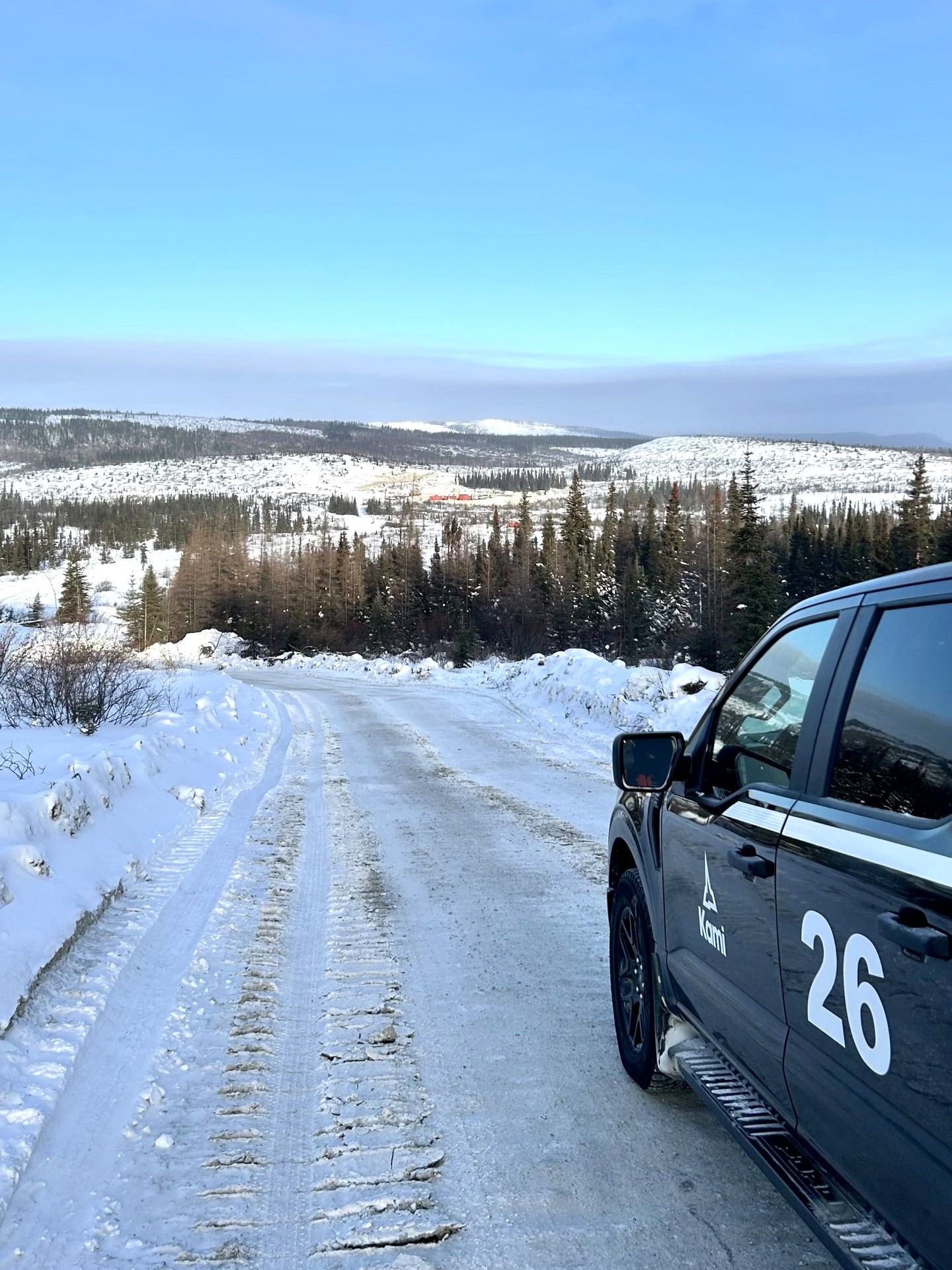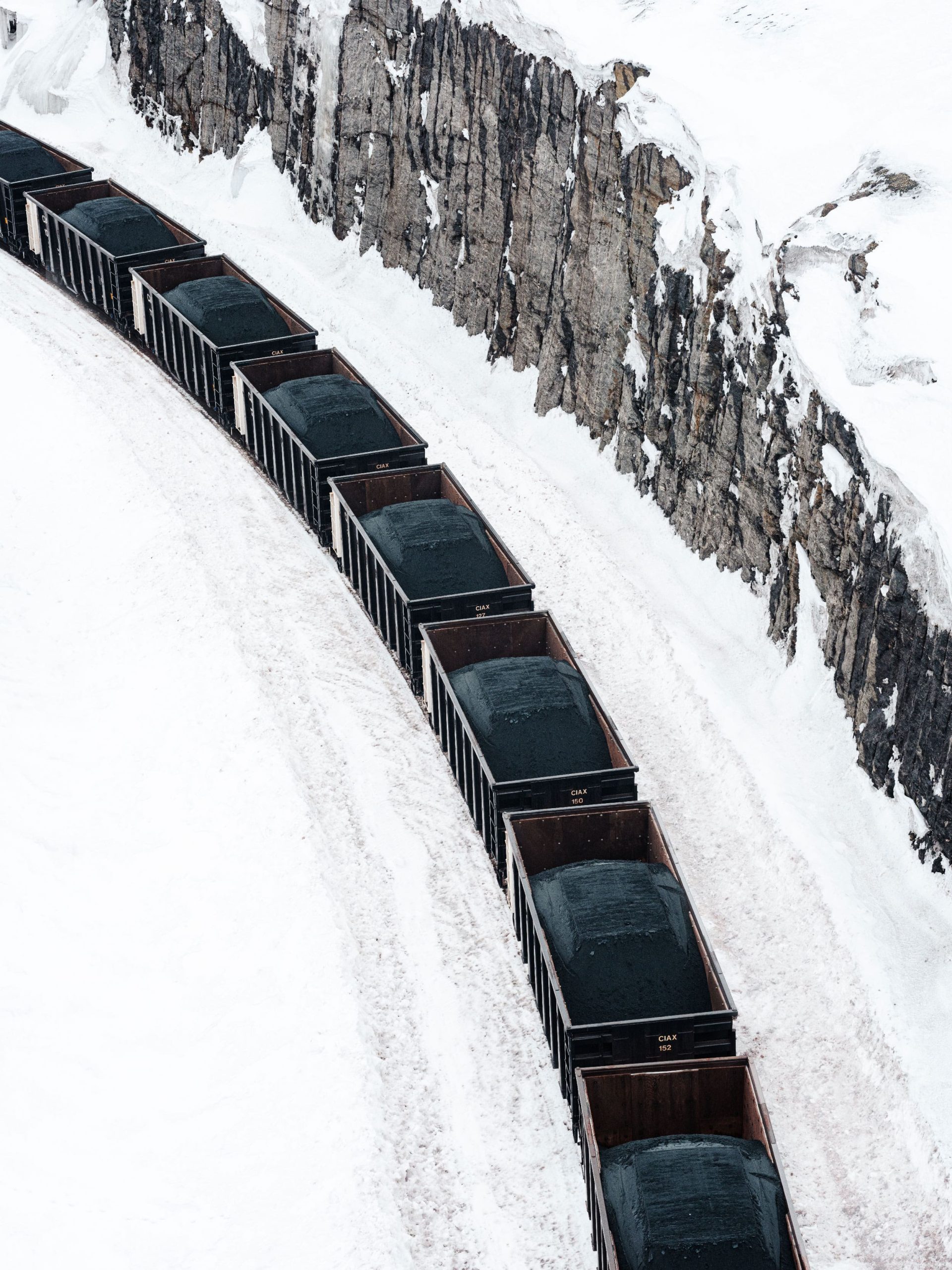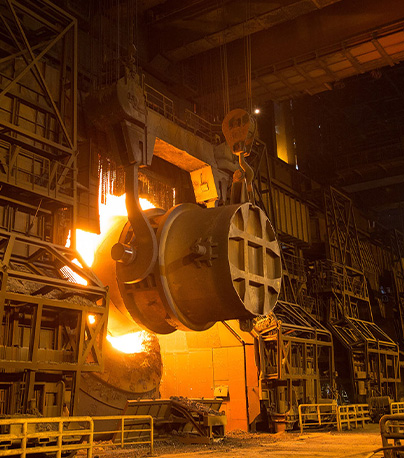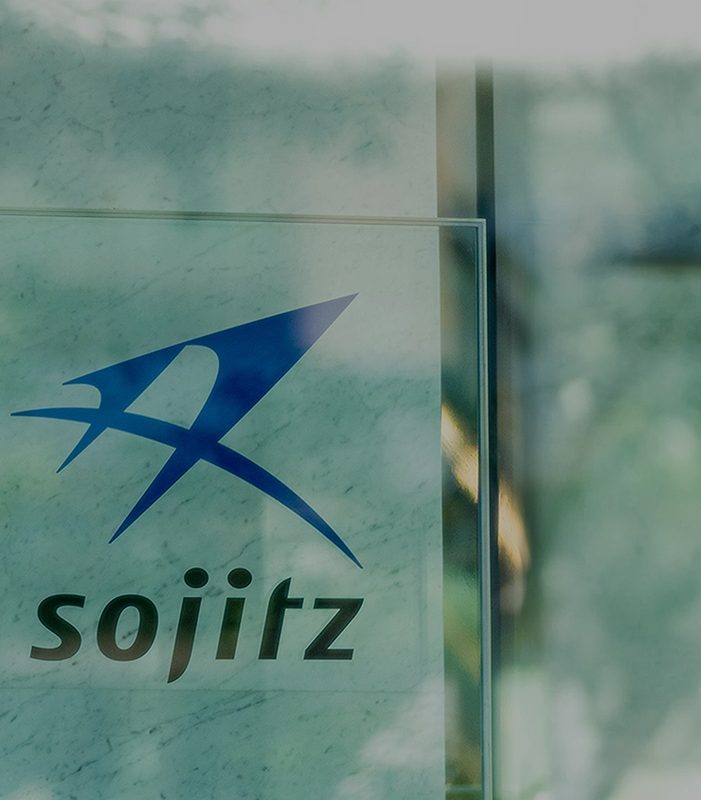About the Project

Unearth
the Potential
The Kami Project aims to build mining and processing facilities to produce 9 million wet tonnes of direct reduction (DR) grade iron ore pellet feed above 67.5% Fe annually. Benefiting from high-quality resources, Kami’s iron ore has the potential to produce DR grade material, a niche segment that accounts for only about 5% of global iron ore supply. This premium-quality iron ore plays a critical role in the decarbonization of the steel industry by supporting the shift to greener steelmaking methods1.
Located in the Labrador Trough, Kami represents an opportunity to leverage the region’s long-standing mining expertise to contribute to the development of the green steel supply chain.
As we move towards a potential interim investment decision and ultimately a potential final investment decision, we remain committed to engaging with local communities and stakeholders, evaluating opportunities to enhance the Project’s economics, and advancing permitting and the completing a definitive feasibility study. These steps are essential as we evaluate a potential $3.9 billion2 investment to bring this Project to life.
Kami Project Highlights
- Pre-feasibility study filed in March 2024, detailing the potential development of a mining operation, including a concentrator, a tailings management facility, and related infrastructure.
- Estimated annual production of 9 million wet tonnes of DR-grade pellet feed iron ore at >67.5% Fe purity.
- 25-year life of mine, based on current resource estimates.
- Completion of the definitive feasibility study expected by the end of the 2026 calendar year.
- Construction period estimated at 48-months following a final investment decision.
- Expected to hold an industry-leading position in emission intensity, with one of the lowest carbon footprints per tonne of high-purity iron ore concentrate produced globally.
1. Green steel refers to steel that is produced using processes that significantly reduce or eliminate Green House Gases (“GHG”) compared to traditional steelmaking, which typically relies on blast furnaces that use coal as both a fuel and a reductant. Accordingly, the steel industry typically classifies green steel as either optimizing traditional steelmaking, including improved supply chains using quality metallics such as Direct Reduced Iron (“DRI”) and Hot Briquetted Iron (“HBI”). Additionally, green steel refers to using alternative methods of steelmaking, including electric arc furnaces (“EAF”), which utilizes recycled scrap metal or DRI to minimize GHG emissions, and could potentially be adapted to use hydrogen as a main source of energy.
High-Purity Iron Ore: A Critical Mineral
In June 2024, the Government of Canada announced the addition of high-purity iron ore to its list of critical minerals. This decision follows those of the governments of Newfoundland and Labrador and Québec, which have also identified high-purity iron ore on their respective lists.
Such recognition highlights the importance of high-purity iron ore in the green steel supply chain as the steel industry seeks to reduce its carbon footprint, currently representing nearly 10% of global CO2 emissions1.
With the steel industry continuing its transition to Electric Arc Furnaces (EAF) steelmaking to reduce emissions, DR quality iron ore will be required to supply the growing need for Direct Reduced Iron (DRI) used by EAF steelmakers. Accordingly, the demand for DRI is expected to increase by approximately 355% by 20502.
Benefiting from vast high-purity iron ore resources, Canada holds an opportunity to become a significant supplier of raw material required for the green steel supply chain.
1. Our World in data (2020)
2. Agora Energiewende I The world Bank Organisation
Adding to Labrador’s Mining Legacy
Labrador is no stranger to mining. For decades, its people have worked in the industry, developing expertise and contributing to both local and national economies. The Labrador Trough is already recognized as one of the world’s premier iron ore producing regions and has even more to offer.
Among its most valuable resources is high-purity iron ore, a mineral increasingly in demand as the steel industry moves toward cleaner production methods. The Kami Project is part of a new generation of mining initiatives that could help meet this rising demand, building on Labrador’s existing strengths and experience.
History
Under its previous owner, Kami underwent provincial and federal environmental assessments. Both levels of government released the Project from the environmental assessment processes in 2014 and allowed the Project to proceed. However, it never advanced to construction.
Champion acquired Kami in 2021. We have since made several changes to the Project design to optimize its environmental performance and engaged with local stakeholders, including Indigenous communities.
The Project now includes improvements in terms of processing, mining methods and environmental management that contribute to reducing the impacts previously assessed.
In December 2024, Champion announced that it had entered into a binding agreement to form a partnership for the joint ownership and development of the Project with two global industry leaders, Nippon Steel Corporation and Sojitz Corporation, who share our long-term vision for Kami to produce high-purity iron ore¹.
Subsequently, on July 21, 2025, Champion entered into a definitive framework agreement with Nippon Steel Corporation and Sojitz Corporation, pursuant to which the Partners have agreed, subject to the Framework Agreement’s terms and conditions, to initially contribute $245 million for an aggregate 49% interest in Kami Iron Mine Partnership, a new entity formed for the ownership and potential development of the Kami Project2.
With Nippon and Sojitz’ successful history in the steelmaking industry, and Champion’s proven track record in operating sustainable projects in the Labrador Trough, Kami has the potential to generate significant economic growth for the province and its residents while contributing to decarbonizing the steel industry worldwide.
The Partners expect to continue optimizing the Project, engage with stakeholders, evaluate opportunities to improve its economics, and advance permitting, before considering a final investment decision.
Timeline & Documents
About the partners

![]()
Champion, through its wholly-owned subsidiary Quebec Iron Ore Inc., owns and operates the Bloom Lake Mining Complex located on the south end of the Labrador Trough, approximately 13 kilometres north of Fermont, Québec. Bloom Lake is an open-pit operation with two concentration plants that primarily source energy from renewable hydroelectric power, having a combined nameplate capacity of 15 million wet metric tonnes per year that produce lower contaminant high-grade 66.2% Fe iron ore concentrate with a proven ability to produce a 67.5% Fe direct reduction quality iron ore concentrate.
Benefiting from one of the highest purity resources globally, Champion is investing to upgrade half of the Bloom Lake’s mine capacity to a direct reduction quality pellet feed iron ore with up to 69% Fe. Bloom Lake’s high-grade and lower contaminant iron ore products have attracted a premium to the P62 index. Champion ships iron ore concentrate from Bloom Lake by rail, to a ship loading port in Sept-Îles, Québec, and has delivered its iron ore concentrate globally, including in China, Japan, the Middle East, Europe, South Korea, India and Canada.
In addition to Bloom Lake, Champion owns the Kami Project located near available infrastructure and only 21 kilometres southeast of Bloom Lake. On July 21, 2025, Champion entered into a definitive framework agreement with Nippon Steel Corporation and Sojitz Corporation to form a partnership for the shared ownership and potential development of the Kami Project. Champion also owns a portfolio of exploration and development projects in the Labrador Trough, including the Cluster II portfolio of properties, located within 60 kilometres south of Bloom Lake.

![]()
Nippon Steel is one of the world’s leading steel steelmakers and Japan’s largest steelmaker. Nippon Steel has a global crude steel production capacity of approximately 86 million tonnes and employs approximately 136,000 people in the world. Nippon Steel’s manufacturing base encompasses more than 15 countries including: Japan United States, India, Thailand, Indonesia, Vietnam, Brazil, Mexico, Sweden and others.
As the ‘Best Steelmaker with World-Leading Capabilities’, Nippon Steel pursues world-leading technologies and manufacturing capabilities and contributes to society by providing excellent products and services. Nippon Steel has been an active customer of Champion since the recommissioning of the Bloom Lake mine in 2018.


Sojitz was formed out the union of Nichimen Corporation and Nissho Iwai Corporation, both companies that boast incredibly long histories. For more than 160 years, our business has helped support the development of countless countries.
Today, the Sojitz group consists of approximately 400 subsidiaries and affiliates located in Japan and throughout the world, developing wide-ranging general trading company operations globally. Sojitz has acted as a marketing partner for Champion since the recommissioning of the Bloom Lake mine in 2018.